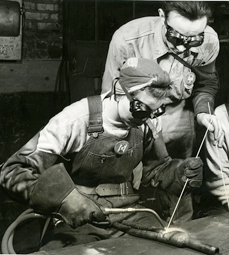- Home
- News
- Features
- Topics
- Labor
- Management
- Opinions/Blogs
- Tools & Resources
Wage Gap Between Men And Women Statistically Stagnant
From the National Committee on Pay Equity: The wage gap between men an women remained statistically unchanged in the last year.
Women’s earnings were 77% of men’s in 2011, compared to 77.4% in 2010, according to Census statistics released September 12, 2012, based on the median earnings of all full-time, year-round workers.
Men’s earning in 2011 were $48,202 and women’s were $37,118, a wage gap of $11,084.
In 2011, the earnings of African American women were $33,501, 69.5% of all men’s earnings, a slight increase from 67.7% in 2010. Latinas’ earnings were $29,020, 60.2% of all men’s earnings, up from 58.7% in 2010. Asian American women’s earnings at $40,882 dropped from 86.6% of all men’s earnings in 2010 to 84.8% in 2011.
The National Committee on Pay Equity’s The Wage Gap Over Time shows how little the wage gap has changed in this century.
According to the National Women’s Law Center:
- The wage gap persists at all levels of education. In 2011, the typical woman in the United States with a high school diploma working full time, year round was paid only 74 cents for every dollar paid to her male counterpart. Among people with a bachelor’s degrees, the figure was also 74 cents. In fact, the typical woman who has received an associate’s degree still isn’t paid as much as the typical man who only graduated from high school.
- A typical woman who worked full time, year round would lose $443,360 in a 40-year period due to the wage gap. A woman would have to work almost 12 years longer to make up this gap. A typical woman working full time, year round who starts, but does not finish, high school would lose $372,400 over a 40-year period, an enormous amount of money for women who are typically paid $21,113 a year. A woman would have to work over seventeen years longer to make up this gap.
(NWLC calculations based on the Current Population Survey. Career wage gaps assume a constant gap and are not adjusted for inflation. Gaps for educational attainment are for individuals 25 and older, other gaps are for people 15 and older.)
>> State wage gap figures from AAUW
>> Analysis of wage gaps by state and congressional district from National Partnership for Women & Children
>> More research reports and fact sheets compiled by the National Committee on Pay Equity
Please subscribe to WWOW’s posts by email:[subscribe2]
List your business in the premium web directory for free This website is listed under Human Resources Directory





